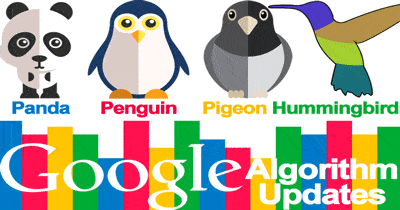
Rei Albano
Having a website for your business is not optional these days. It is now mandatory to have a site, no matter how small you are, if you want your brand to grow.
But there are many considerations you must remember when creating your site, and these include having a mobile-ready website, curating excellent content, and having user-friendly buttons that can make it easy for people to share your posts.
However, when you look at sites, many site owners commit mistakes that are easily avoidable. These errors may seem trivial, but they contribute a lot to making or breaking the integrity of your brand.
What are website building mistakes you must avoid? Here are common mistakes many entrepreneurs are guilty of:
1. Your fonts are either too large or too small
When building your site, you must always have the reader in mind. When you come across websites with fonts too large or too small, most likely you want to leave the site for good.
The reason why you’re putting up a website is that you want to show to the world what your brand is capable of. You want others to know of your products and services. However, if you cannot showcase the best you’ve got, then you are not contributing to the improvement of your company’s integrity.
If you choose to publish with the wrong font size, you are losing customers in the process because website design and layout all contribute to improving your brand’s integrity. No matter how great your content is, if you don’t get to deliver the way people would want to read your posts, then you are not doing your company a favor.
The recommended font size is 16px for desktop and tablet. You may want to apply this font size to your website and see how the audience responds.
2. Your website is not mobile-ready
A few years ago, having a mobile version of your site was optional. However, these days, with more people using their smartphones to browse the internet, it is mandatory for every website owner to have a mobile-friendly version of their sites.
On some web building platforms, creating a mobile site would require you to build a new site just for mobile. On other site building platforms, such as WordPress, the mobile site is created automatically for you when you create the desktop site. For some, building another mobile site is better because they get to choose a customized layout just for mobile use. However, for some, they like the automatic creation of a mobile site because the website turns out responsive.
Whatever you choose, whether you build the mobile site from scratch or you want it automatically created for you, the crucial thing is you must have a mobile-friendly website, along with a desktop-ready one.
3. You publish poorly written content
Let’s say you now have a mobile-optimized and excellently built website. It is going great so far. However, if you only focus on the visuals and not on content, then you are setting yourself up for failure. The reason being people also value excellent content. They cannot deal with crappy content, posts that are poorly written and edited, and posts that do not provide any value.
Along with publishing a reader-friendly website, you must also focus on creating excellent content. You must make sure that your current and potential customers do not lose their trust in you just because of simple oversights such as the interchange of “your” and “you’re,” and “stars” and “star’s.”
While building a website is now a standard for all enterprises, you should make sure that the site you publish is worth visiting by current and potential customers. Avoid these mistakes to improve your company’s integrity and brand name further.

Rei Albano
Recruitment (or hiring) companies have quickly moved online with the Internet boom, and it’s a smart move since they’ve gone to accept applicants and clients from all around the world.
It would have been great at the beginning, but now, the market is saturated with recruitment companies that try to set themselves apart with many strategies including freebies, low rates, and excellent customer support.
But how can companies stand out when there are thousands of recruitment businesses to choose from? Even if they are one of the best, how can they relay to the world that they, indeed, offer the best services in the world?
Here are some smart SEO strategies for your recruitment company that you should consider applying right now:
- Have a sleek website
Hiring is all about professionalism. And if you don’t have a professional website to boot, how can you convince others that you are guided by the same principle?
Invest in having a fast-loading, well-curated, and easy-to-navigate website. Double check for grammatical, spelling, and layout errors before going live. You can always change your design once you go live, but it is way better if you are entirely sure with your website before you publish, so as not to confuse search engines and your audience.
- Publish great content
Your website does not have to stop with layout and design. Equally important is providing excellent content that makes your readers eager to keep on coming back to your site.
You should be focusing on the service that you provide, and that is recruiting. So, start outsourcing content writing to those who do it best. You will end up juggling so many things if you do writing and website management, along with recruiting.
And do not think that you can easily re-spin any content online. It is a big no-no because spinning can hurt your SEO ranking. You should publish unique articles that can help you become the number one guide for people who may have questions about recruitment. You should give a lot of thought about your content.
Map out your content and do not jump into publishing a variety of topics just because you feel like it. Have a goal in mind, stick to a particular theme, and publish articles that answer your goals while being in line with your theme.
- Choose the right keywords
Keywords help search engines look for relevant content in your publication, and can assist in determining how you rank on engine pages. It is then important for you to think of the right keywords to put on your posts. You don’t have to put in a lot of keywords; more is not always better. You should instead focus on hitting keywords that can best define your post.
You can start by searching for your topic on the search engine, and check out websites that appear on the first pages. Take note of the keywords they have used and get those as guides for when you have to choose your keywords.
As with any other business, it can be a challenge to bring yourself out there in this highly competitive world of SEO rankings. But, giving an edge for your business can be done when you have a great website, excellent content, and the most relevant keywords.

Julia Zheng
Google’s Algorithms are a top-secret component of Google that relies on over 200 signals that helps give users the results they’re looking for when using Google. Over the years, it has gone through a long series of updates and changes to prevent any company from “hacking” and abusing the system. The systems they use to calculate these page rankings put the most important and relevant websites higher up on the results page, and the less important websites appearing lower down or in later pages. Some signals that they use are PageRank, how recent and frequently your content is updated, and the terms on your website. Let’s go through a brief history of the most important Google Algorithm Changes.
December 2000- Google Toolbar was launched, and with it came the advent of the Toolbar PageRank. Larry Page is one of the founders of Google, and is also the person for whom PageRank is named after. It fits in auspiciously well with its prescribed role. If you have a web domain or own a small business, you know how important PageRank is to your day to day operations. The PageRank ranks websites as a whole number from 0-10, with 10 being the most popular websites and 0 being low-traffic, unpopular websites. Google will not disclose the full specificities of how a page acquires its PageRank value, but it is only a rough measurement of the value of a web domain.
October 2005 – Google Local is introduced. In October 2005, this feature merged the Google Apps feature into the Local Business Center feature that was launched in March. This change translated to a series of changes in local SEO tactics. It pushed the importance of local businesses to update their information.
April 2010– Google LBC was rebranded as Google Places. It integrates more information from local search results into the algorithm. It worked to better connect Google Place Pages with the settings where local business information is located. It allowed for the proliferation of QR codes, Favorite Places, the ability to pay for Enhanced Listings, and Business photos of the interior of the business. Small businesses were able to better their page rankings by putting themselves on Google Maps, which introduced many of them to the field of SEO.
February 2011 – The Panda Update is probably the most famous and substantial Google Algorithm update so far. This update put the SEO world into a frenzy. It set out to penalize content farms and low-quality websites. Before this update, markets could inundate their websites with low-quality articles. These articles could be written on the cheap by outsourcing the task to people abroad who were willing to take these labor intensive jobs. These low-quality articles would be stuffed to the brim with keywords, and for a long time, Google had rewarded these pages with higher rankings. However, this update shifted the focus from quantity to quality. The crack-down also applied to websites with high ad-to-content ratios. Updates on the Panda algorithm are still being added to this day.
update so far. This update put the SEO world into a frenzy. It set out to penalize content farms and low-quality websites. Before this update, markets could inundate their websites with low-quality articles. These articles could be written on the cheap by outsourcing the task to people abroad who were willing to take these labor intensive jobs. These low-quality articles would be stuffed to the brim with keywords, and for a long time, Google had rewarded these pages with higher rankings. However, this update shifted the focus from quantity to quality. The crack-down also applied to websites with high ad-to-content ratios. Updates on the Panda algorithm are still being added to this day.
April 2012 – The Webspam Update is another one of those infamous, major Google updates, otherwise colloquially known as the Penguin Update. It was a further move to de-emphasize content that was rife with keywords. There was a crack down on the buying and selling of links, as well as other black hat techniques. It impacted about 3.1% of total English search queries, and minor updates continued for several months afterwards.
April 2015 – The latest update emphasizes the increasing importance of making a website optimized for both computer and mobile use. How mobile-friendly a website was made a stronger ranking factor for mobile searches. This movement is otherwise known as “Mobilegeddon“. Google’s prioritization of the mobile-first design clearly outlines their stance on the issue, so make sure your website comes with a mobile friendly tag.

Julia Zheng
Meta Keywords
Meta keywords are a type of meta tag that appear in the source code of a page that gives search engines useful information about what the topic of any page is. Several years ago, Google used to use the keywords meta tags the way they were meant to be used. However, they quickly discovered that web site developers were “stuffing” high volume keywords and phrases into their code, phrases that were often irrelevant to the topic that they were writing about, to generate additional user traffic towards their pages. This ended up clogging up the search engines’ accuracy and predictive value. Eventually, Google has devalued the use of Meta Keywords, as indicated in an official Google Webmaster Blogpost. It is rumored that Google changes its algorithm for determining which content comes up higher on search engines every 48 hours, so it may be near impossible to predict whether or not Meta keywords are considered at all. However, it is safe to say that its low ranking in Google’s considerations is not going to change anytime soon
Use your Meta description!
 Though Meta keywords might be ignored by Google, too few companies successfully utilize their meta description space. Many choose to eschew it altogether! The meta description provides a short and concise explanation of what your web page is about. They’re commonly used to give preview snippets of your page in search engine result pages. Think of it as 215 character elevator pitch. Note that this character count includes the title of your page. Take the extra couple of minutes to write an engaging description for the stand-out pages in your site, especially the ones that you feel will garner a lot of social media attention. Maybe consider using action words like “act”, “learn”, or “choose”, which is a compelling call for action on the reader’s part.
Though Meta keywords might be ignored by Google, too few companies successfully utilize their meta description space. Many choose to eschew it altogether! The meta description provides a short and concise explanation of what your web page is about. They’re commonly used to give preview snippets of your page in search engine result pages. Think of it as 215 character elevator pitch. Note that this character count includes the title of your page. Take the extra couple of minutes to write an engaging description for the stand-out pages in your site, especially the ones that you feel will garner a lot of social media attention. Maybe consider using action words like “act”, “learn”, or “choose”, which is a compelling call for action on the reader’s part.
Make friends with the PR department
Make friends with the PR department after you’ve created quality services and valuable content. Be bold. Sell yourself and sell your brand. Google “best of” and “top 10” lists to see if you or your competitors are listed. If you are not on the list, see what your competitors are doing that you’re not doing and adjust accordingly. Better yet, if you believe that your goods and services can be a valuable asset to another company, let them know and approach them. For instance, say you are on a fitness and lifestyle blog. Your company sells organic, naturally sourced and fair-trade workout gear. Approach them and pitch to them why they need to know about your brand. Earn your links. Referral traffic can generate valuable user exposure for you and establish your brand as a leader in the field.
The continued importance of Mobile Searches
According to the GlobalWebIndex, about 80% of adults have a smartphone. Adults spend, on average, about 1.85 hours a day on the phone, and this figure is only showing more growth, especially in fast-growth markets. Almost half of users that fall in the 16-24 year old age group spend their internet time on the phone, as opposed to a desktop or a laptop. More and more people are acquiring smartphones, and with the advent of wearable technology, such as the iWatch or the Fitbit, internet usage on mobile devices is only trending up. Needless to say, your site needs to be optimized for web search. For instance, in Google Webmaster accounts, Google has added a mobile usability section which lets users know how well their site fares on mobile devices. Take advantage of this and honestly evaluate your website. Get rid of as many barriers that may hinder entry to your websites, such as some images and JavaScript. Redesign your website so that it can optimize variations on your content so its suitable for mobile usage. If you don’t have the time or money to dedicate to this, it might be smarter to just build a new, separate mobile webpage using sound SEO strategies.
Jason Berkowitz, Founder, SEO Director
 It’s now 2015, and the dust has settled from all of the SEO revelations of 2014. While this past year may have not seen the biggest search engine ranking shakeups in history (that was probably 2012 with the birth of Penguin), it was dynamic and had plenty of SEO pros on their toes trying to keep up.
It’s now 2015, and the dust has settled from all of the SEO revelations of 2014. While this past year may have not seen the biggest search engine ranking shakeups in history (that was probably 2012 with the birth of Penguin), it was dynamic and had plenty of SEO pros on their toes trying to keep up.
Just what does Google want a poor SEO or webmaster to do? An ordered list of the top SEO news of 2014 should uncover a pattern for smart SEOs and webmasters.
Top SEO News Of 2014 And Predictions For 2015
Top Google Search Terms For The Year
Just to keep things interesting, we’ll begin with a summary of some of the top Google searches for the year. This is relevant because most of these searches are related to current events, so it may give content producers an understanding of some current topics to focus on that are happening in 2015.
Top Searches For 2014:
* Robin Williams
* World Cup
* Ebola
* Malaysia Airlines
These are either related to crisis situations, famous performers, entertainment, or in the case of the ALS Ice Bucket Challenge, a promotional event to raise money for a good cause. It’s impossible to predict what will interest people through all of 2015, but it should be fairly easy to spot that type of news when it happens. Not every bit of news will trend to the top, but it’s worth a shot or major news stories.
Mobile Is Still Growing
If it hasn’t already been done, all websites need to be optimized for mobile use and mobile searches. If there is one thing that is taking off, it is the use of handheld devices, like smart phones and tablet computers, to search on the Internet. Website owners who have resisted the move to mobile are bound to lose their market share — and they might even lose their shirts.
Just look at these statistics right from Google:
* In 2014, 1.3 billion Internet phones were shipped all over the world.
* Today, users spend an average of over 150 minutes a day using their smart phones, and this is now more than they spend watching TV or using a laptop computer.
* Google says that about 20 percent of their searches are related to locations.
* Searches for things “nearby” the user have grown five times since 2011.
This should enable any decent SEO to make some good predictions about 2015. People are going mobile, and they are using their phones and other Internet devices to look for local products and services.
Google’s Pigeon Update: Local Search Improvement
There is another new animal in the Google zoo, and this one is called pigeon. It is intended to improve mobile searches, and it has already been rolled out in over 100 countries. This means two things:
* SEOs need to obtain verified map listings in any locality they plan to do business in.
* Local search has become extremely competitive because the “local boxes” have reduced the number of business listings on the first page of search.
* Local search will become even more competitive as local businesses get the idea that they need to get plugged in.
Penguin Keeps Getting Revised
When the first Penguin rolled out, it caused a major shakeup in the SEO industry. Plenty of webmasters saw their traffic decline overnight. However, other webmasters were lucky enough to reap the benefits because somebody has to be on the first page, right.
Penguin has certainly not gone away, but it seems to have settled more into a flow of discounting poor links but not really penalizing websites for them unless they are obviously outrageous.
Also, Google employees have stated that plenty of quality links can overwhelm any negative value attached to poor links. Even if it is not possible, and sometimes it isn’t, to wipe out all of the bad links, it might be possible to overcome any slaps with plenty of good ones. This is because the algorithm is said to notice improvement.
Anyway, the same rules still apply when it comes to safe link building:
* A few good links are great; thousands of low-quality links could be a disaster.
* Don’t over-optimize anchor text. Analyze top competitors in a niche and try to mimic them.
It’s also important to note that some webmasters have reported recovering from an original Penguin penalty after the penalty simply expired. The websites may not have completely sprung back to life because no decent links were left after several months had passed, but they did seem to respond to new link-building efforts, and that was not something they had done in the past.
Apparently There Are Mild Cases Of Penguin
Another surprising statement by Matt Cutts in 2014 is that there were mild cases of Penguin vs. strong cases. Apparently, recovery by adding better links is more likely in the “mild” case situation. Link removal and reconsideration requests might be needed for the severe ones.
Where Did Author Photos Go?
Google made a big deal out of authorship, and some websites did very well by taking advantage of the fact they could link sites to their Google Plus profile. The listing had a picture, so it was very visible. Then Google removed the photos, and webmasters thought their efforts were wasted.
However, there is still plenty of evidence that Google notices top contributors in a topic, and it is still worth it to use Google authorship. It might not still result in a listing with a thumbnail picture, but it should still help with ranking.
What’s Ahead For 2015?
There are still plenty of opportunities to draw more visitors from organic search engine rankings. The emphasis is on gaining quality links from quality websites. Other tips to ranking include getting verified in local search and gathering authoritative local citations. Of course, good content that naturally draws in visitors and gets shared on social networks adds a boost, but nobody is still exactly sure how strong that boost is.
Jason Berkowitz, Founder, SEO Director
We are now proud to announce that we now offer Semantic Web Optimization Services which can be found at the following site, http://www.swoservices.com.
What Is The Semantic Web?
 The Semantic Web is something that many have heard of, yet so many are still in the dark about what it truly is. That is because things are still new and of course the semantic web is also something like a mystery since it is still in such early stages of development. In this article we will examine the semantic web and help you gain a clear understanding of what it is so there is no more wonder in your mind. If you are computer savvy and want to make your computer and browsing experience a better one, this is the article that was made just for you!
The Semantic Web is something that many have heard of, yet so many are still in the dark about what it truly is. That is because things are still new and of course the semantic web is also something like a mystery since it is still in such early stages of development. In this article we will examine the semantic web and help you gain a clear understanding of what it is so there is no more wonder in your mind. If you are computer savvy and want to make your computer and browsing experience a better one, this is the article that was made just for you!
The Semantic Web is tagged information that computers and other similar systems can easily access and decipher. With it information can be reused and recycled and people spend much less time trying to build their company or business name. Tim Berners-Lee is to thank for the introduction of the Semantic Web just a few short years ago. With the semantic web it becomes easier for search engines to pull out the relevant information , the details that you want, whether you search for your family history, a recipe or your family tree!
With the use of the Semantic Web an article or a document can be taken apart and the guts of it can be learned. This includes information including the author’s name, the name of the article or paper, the topic and the publisher of the article.
There are many ways to utilize the Semantic Web. One way, you will need a DOCTYPE file for your document, a root element ant, and <head> and <title> elements and a body and frame element. The document that has been properly structured in the right way will be displayed in a tree format. All of the elements then branch off of the element according to their importance. Because of this it is easy to design CSS style sheets and to interact with specific nodules with the help of Javascript.
The second and proficient method is called Semantic Markup, where certain codes are entered into the website text. We specialize in using Semantic Markup.
Writing Semantic Web Pages
There are just a few steps needed to write a webpage in semantic form.
- Use HTML elements so it is easy to determine what the content is
- Be sure that all headers define other headers. You also need to make sure that they are in the right order according to their importance.
- Always use paragraph tags (<>) to initiate a paragraph
- When navigation is of the essence make sure that you are using lists
- Avoid style-based tags
Once these steps are completed then it is easy to make the page your own design and style. You will use Javascript and CSS to do this.
Although this may sound like a foreign language to those who do not handle the insides of computers and their operation, once you get to know and understand the processes things become far easier and you will easily understand what it all means.
In addition to the basics, you can use the semantic web for sites that are already in the process of development. Some of the XML specifications that can be used include FOAF, OWL and RDF formats.
There’s a lot of talk and a lot of buzz about the semantic web. With the traditional form of website design you concentrate your attention on semantic form you are focusing on the relations between these things and how the computer understands it all.
If all of this sounds complicated to you, well, that’s because it is. Semantic web is abstract since it is an idea instead of a technology that is being used. With this idea you combine all of the things that one can see when they browse the internet and describe them and how they relate to one another.
You see, when you go on a website to look for something, you know what it is that you are looking for, what you want. Your computer, on the other hand, doesn’t. When semantic web is used you can learn exactly what it is, whose it is and more.
Learning Semantic Web
Whether you want to try it out for yourself as a web designer or simply want to know the process, there are a few ways that can be used to help learn the semantic web. You should apply all of these processes together to learn the semantic web process and how to do it. Software journals are probably the easiest and the best way to learn semantic web. With a quick web search you can easily find these journals.
Once you learn the process of creating Semantic Web you also need to have the right software to do the job. You learn Semantic Web also the same way that you learned how to use the original computer software for the first time.
The semantic web leaves ontologies of information, so this can certainly help someone with many different things that they may need to use.
Be sure to be confident in your work or hire New York SEO Services that are confident in helping you.
The Importance of Semantic Web
So what does all of this mean to you and why is the Semantic Web so important? First of all, the internet and the number of users accessing it changes on a daily basis. There needs to be a method that can help sort through all of the data, finding only information that is relevant to you and what it Is that you are looking for. This reduces the time, energy and effort that is spent online trying to find things. Whether a business minded individual or someone that simply wants to browse the web, Semantic Web can make it all far easier.
The Semantic web is brand new and people are still playing around with it, trying to learn what they can do. It is most definitely an interesting process that can help the internet expand and explode into a better, more meaningful web that everyone together can enjoy. Why let computers have all of the fun when there can be implementations made and the web made a better place for everyone? When the process of Semantic Web is learned this is just what can happen!






 Though Meta keywords might be ignored by Google, too few companies successfully utilize their meta description space. Many choose to eschew it altogether! The meta description provides a short and concise explanation of what your web page is about. They’re commonly used to give preview snippets of your page in search engine result pages. Think of it as 215 character elevator pitch. Note that this character count includes the title of your page. Take the extra couple of minutes to write an engaging description for the stand-out pages in your site, especially the ones that you feel will garner a lot of social media attention. Maybe consider using action words like “act”, “learn”, or “choose”, which is a compelling call for action on the reader’s part.
Though Meta keywords might be ignored by Google, too few companies successfully utilize their meta description space. Many choose to eschew it altogether! The meta description provides a short and concise explanation of what your web page is about. They’re commonly used to give preview snippets of your page in search engine result pages. Think of it as 215 character elevator pitch. Note that this character count includes the title of your page. Take the extra couple of minutes to write an engaging description for the stand-out pages in your site, especially the ones that you feel will garner a lot of social media attention. Maybe consider using action words like “act”, “learn”, or “choose”, which is a compelling call for action on the reader’s part. It’s now 2015, and the dust has settled from all of the SEO revelations of 2014. While this past year may have not seen the biggest search engine ranking shakeups in history (that was probably 2012 with the birth of
It’s now 2015, and the dust has settled from all of the SEO revelations of 2014. While this past year may have not seen the biggest search engine ranking shakeups in history (that was probably 2012 with the birth of  The Semantic Web is something that many have heard of, yet so many are still in the dark about what it truly is. That is because things are still new and of course the semantic web is also something like a mystery since it is still in such early stages of development. In this article we will examine the semantic web and help you gain a clear understanding of what it is so there is no more wonder in your mind. If you are computer savvy and want to make your computer and browsing experience a better one, this is the article that was made just for you!
The Semantic Web is something that many have heard of, yet so many are still in the dark about what it truly is. That is because things are still new and of course the semantic web is also something like a mystery since it is still in such early stages of development. In this article we will examine the semantic web and help you gain a clear understanding of what it is so there is no more wonder in your mind. If you are computer savvy and want to make your computer and browsing experience a better one, this is the article that was made just for you!